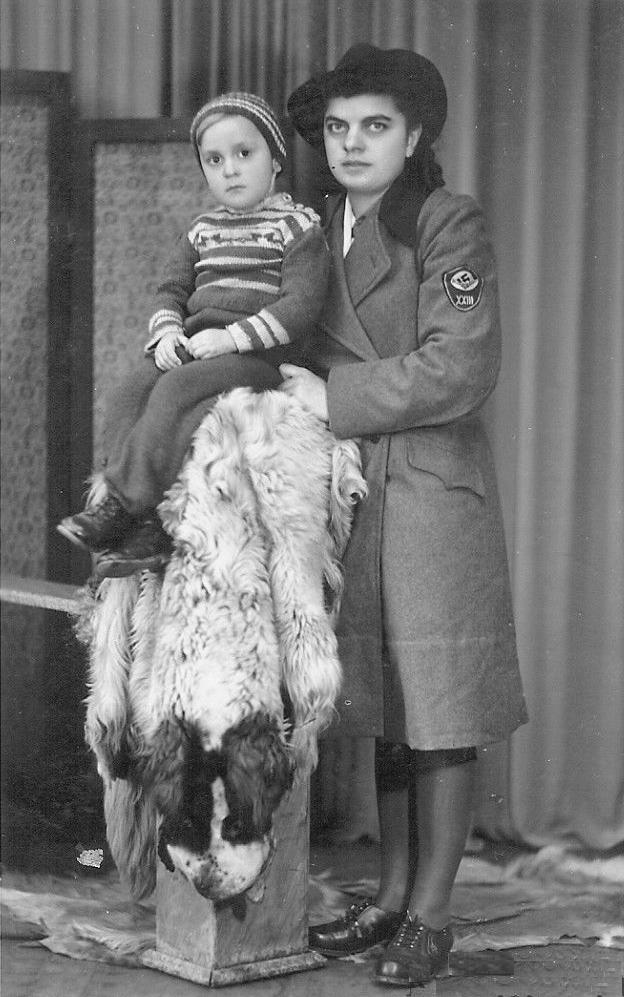
RAD Members: Girls

Figure 1.-- RAD Arbeitsmaiden at first were mostly secondary school graduates that wanted to enter the university, but needed to complete their Labor Service first. At first they were asigned duties like gardening and domestic work including child care which is wht we see here. After the War began they began to get assinmenbts with the Wehrmacht such as (Wartime Auxilery Service Girls
|
|
The RAD was primarily a male organization. Virtually All the images of RAD youth we have found are are male, usually teenagers. There was, however, also a female RAD program. The male program was the Reichsarbeitdienst Manner (RAD/M). The female program ws the Reichsarbeitdienst der weibliche Jugend (RAD/wJ).
The BMD (girl's Hitler Youth) operated under the same law regulating the boys making paricipation mandatory. This does not seen to have been the case for the RAD. It was voluntary for the girls at first. This reflcted the NAZI view that women belonged in the home. As a result, there were at first few RAD Arbeitsmaiden (labor girls). One author suggests about 40,000 girls. [Hagemann, p. 494.] This was a small fraction of the number of BDM girls. Many of the initial RAD Arbeitsmaiden were graduating secondary school girls who wanted to enter university. This was in contrast to the boys who wre many youths who only hs primary educations. NAZI policy was to restrict female unversity matriculation, but many young women wanted to enter the university. To do so they had to sucessfully complete 6-months of RAD service. The girls wre not used for heavy labor cinstruction projects. They were usually used for agriculture and gardening as wll as domestic dutis, assigned to qualifuin households as well as care gor children abd the elderly. This began to change with the advent of World War II (1939). The Government issued the Verordnung für die Durchführung der Reichsarbeitspflicht für die weibliche Jungend (Implementation of the Reich Labor Service for Female Youth). RAD service became mandatory to aid in the war effort for girls age 17-25 years. This applied to girls who were not working or in school or needed on family farms. The number if RAD girlswas increased to 100,000. Gradually as the war dragged on, the use of the girls began to change from gardening and domestic service. The Wehrmacht upon launching Brbarossa needed more personnel. They begn tappinging into female youth. This was authorized by the Erlss über den weiterenKriegshilfsdienstmaiden (Decree in the Further Deployment of the Reich Labor Service for Female Youth). This authorized using the teenage Arbeitsmaiden in auxilery military services -- Kriegshilfsdiennstmaiden (Wartime Auxilery Service Girls). The plan was to increase the number of RAD girls from 100,000 to 150,000. The girls took over non-combat dties such as offce work bd communications, rleasing men for combat. [Seidler, pp. 44-50.] This was different than the approximately 1.5 million BDM girls who were more commonly used for agicultural labor.
Sources
Hagemann, Karen, in Barton C. Hacker and Margaret Vining. A Companion to Women's Military History (Brill: 2012).
Seidler (1978).
CIH -- WW II

Related Chronolgy Pages in the Boys' Historical Web Site
[Main Chronology Page]
[The 1910s]
[The 1920s]
[The 1930s]
[The 1940s]
Navigate the German school pages
[Return to the Main RAD page]
[Return to the Main NAZI education tertiary level page]
[Return to the Main school uniform national page]
[Return to the Main German school uniform page]
[Imperial Germany]
[Weimar Republic]
[NAZI era]
[Post-war Years]
[Modern Germany]
Navigate the Relate Boys Historical Clothing Style Pages
[Main country page]
[Long pants suits]
[Short pants suits]
[Lederhosen]
[Kneesocks]
[Eton suits]
[Jacket and trousers]
[Blazer
[School sandals]
Navigate the Boys' Historical Clothing School Uniform Pages
[Main School Uniform Page]
[Australia]
[England]
[France]
[Germany]
[Italy]
[Japan]
[New Zealand]
[Scotland]
[United States]
Navigate the CIH World War II Section:
[Return to the Main RAD member page]
[Return to the Main RAD page]
[Return to the Main NAZI tertiary education page]
[About Us]
[Aftermath]
[Biographies]
[Campaigns]
[Children]
[Countries]
[Deciding factors]
[Diplomacy]
[Geo-political crisis]
[Economics]
[Home front]
[Intelligence]
[Military forces]
[POWs]
[Resistance]
[Race]
[Refugees]
[Technology]
[Totalitarian powers]
[Bibliographies]
[Contributions]
[FAQs]
[Images]
[Links]
[Registration]
[Tools]
[Return to Main World War II page]
[Return to Main war essay page]
[Return to CIH Home page]
Created: 7:25 AM 12/3/2017
Last updated: 7:25 AM 12/3/2017



